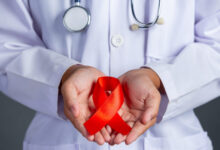Can HIV-Positive Couples Have Healthy Children?
HIV-Positive and Planning a Family? Here’s How to Have HIV-Negative Children

Having children is a dream for many couples, including those who are HIV-positive.
With advancements in medical science, it is possible for HIV-positive couples to have healthy, HIV-negative children.
This article will explore the steps and precautions that can be taken to ensure a safe pregnancy and a healthy baby.
1. Understanding HIV and Pregnancy

HIV (Human Immunodeficiency Virus) is a virus that attacks the immune system. Without treatment, it can lead to AIDS (Acquired Immunodeficiency Syndrome). However, with proper medical care, individuals living with HIV can lead healthy lives, and this includes having children.
2. Is It Possible to Have HIV-Negative Children?

For couples where one or both partners are HIV-positive, concerns about passing the virus to their children can be overwhelming. Fortunately, advancements in medical science have made it possible for HIV-positive couples to have healthy, HIV-negative children. Understanding how HIV transmission works and the steps that can be taken to prevent it is crucial.
3. Understanding HIV Transmission

HIV primarily spreads through unprotected sexual contact, sharing needles, or from mother to child during pregnancy, childbirth, or breastfeeding. The virus attacks the immune system, making it harder for the body to fight off infections and diseases. Without proper treatment, HIV can lead to AIDS, a life-threatening condition.
4. The Importance of Antiretroviral Therapy (ART)

Antiretroviral therapy (ART) is a critical component for HIV-positive individuals who want to conceive. ART helps reduce the viral load in the body to undetectable levels. When the viral load is undetectable, the risk of transmitting HIV to the partner or the baby is significantly reduced. Both partners should be on ART and adhere to their treatment plan consistently.
5. How HIV-Positive Couples Can Have HIV-Negative Children

Advancements in medical science have made it possible for HIV-positive couples to bring healthy, HIV-negative children into the world. Here’s how it works:
- Preconception Care and Planning: It is essential for HIV-positive couples to consult healthcare providers specializing in HIV before trying to conceive. This ensures that both partners are in good health and that the HIV-positive partner’s viral load is undetectable. The healthcare provider can guide the safest ways to conceive and reduce the risk of transmission.
- Effective Use of ART: For HIV-positive mothers, taking ART throughout pregnancy, labor, and delivery is crucial. ART can lower the viral load to undetectable levels, reducing the risk of passing the virus to the baby to less than 1%. The use of ART during pregnancy is one of the most effective ways to ensure that the baby is born HIV-negative.
- Special Delivery Methods: In some cases, healthcare providers may recommend a Cesarean section (C-section) to reduce the chance of transmission during delivery, especially if the viral load is not sufficiently controlled. However, if the mother’s viral load is undetectable, a natural delivery may still be safe.
- Preventing Postnatal Transmission: After birth, the newborn may receive HIV medication for a few weeks as a precaution. Mothers are also advised to avoid breastfeeding if safe alternatives like formula feeding are available, as HIV can be transmitted through breast milk. In situations where breastfeeding is necessary, continuing ART while breastfeeding significantly lowers the transmission risk.
6. During Pregnancy: Monitoring and Care

Throughout the pregnancy, the HIV-positive mother should continue taking ART as prescribed. Regular monitoring of viral load and CD4 count is essential to ensure the health of both mother and baby. The healthcare provider may also recommend additional precautions, such as a scheduled cesarean delivery, to further reduce the risk of HIV transmission.
7. Reducing the Risk of HIV Transmission to the Baby

There are several strategies to minimize the risk of mother-to-child transmission of HIV:
- Continued ART: Adhering to ART during pregnancy and delivery is crucial. It reduces the viral load and the risk of transmitting HIV to the baby.
- Avoiding Breastfeeding: In countries where safe alternatives to breastfeeding are available, it is often recommended that HIV-positive mothers avoid breastfeeding, as HIV can be transmitted through breast milk.
- Post-Exposure Prophylaxis (PEP) for the Baby: After birth, the baby may be given antiretroviral medication for a few weeks to further reduce the risk of HIV infection.
8. After Birth: Ensuring the Baby’s Health

After birth, the baby will be tested for HIV at regular intervals. Early testing and diagnosis are essential to ensure that, if necessary, the baby can start treatment as soon as possible. With proper care, most babies born to HIV-positive mothers are HIV-negative and grow up healthy.
9. Living a Healthy Life with Your Child

HIV-positive couples can enjoy a fulfilling life with their healthy children. It’s important to continue regular medical check-ups and adhere to ART. Open communication with healthcare providers and accessing support networks can also provide emotional and practical assistance throughout the parenting journey.
10. Breaking the Stigma

It’s important to address the stigma that often surrounds HIV and parenthood. HIV-positive individuals and couples can live healthy lives, raise families, and contribute positively to society. Education and awareness are key to breaking down misconceptions and supporting HIV-positive parents in their journey.
Conclusion
Yes, HIV-positive couples can have healthy, HIV-negative children.
With the right medical care, adherence to ART, and ongoing support, the dream of parenthood can become a reality.
If you are an HIV-positive couple considering having children, speak to your healthcare provider to explore your options and start planning for a healthy future.









